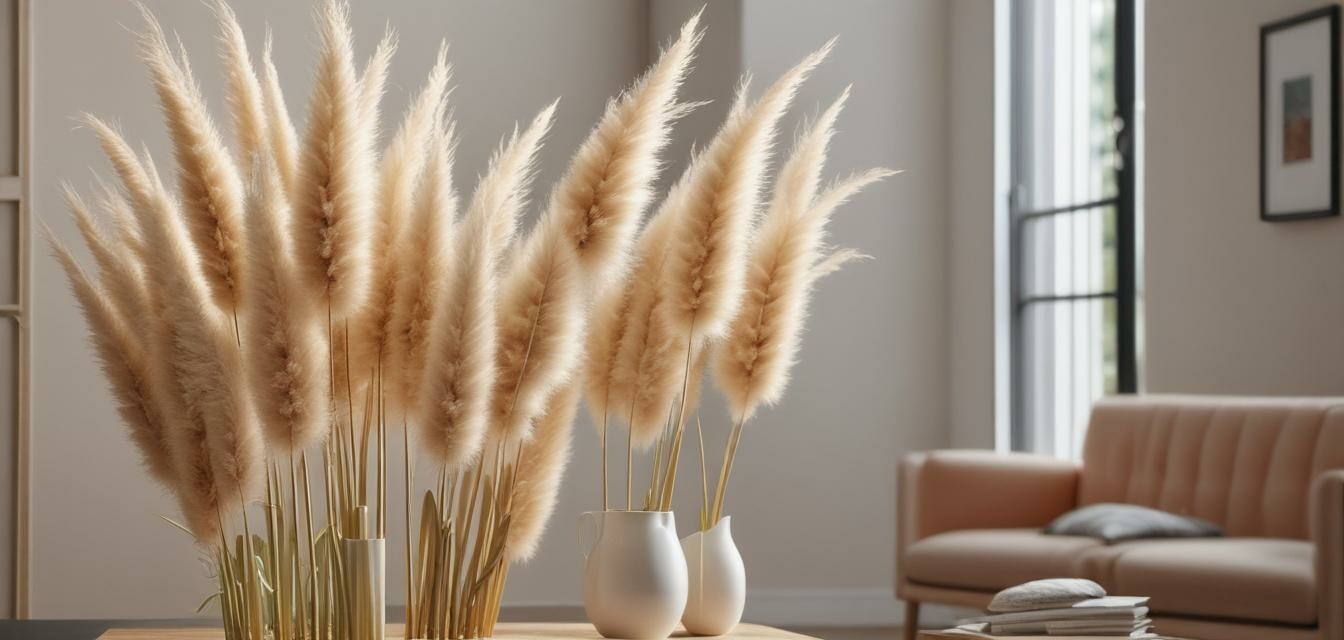
Eco-Conscious Pampas Grass: The 2025 Edition
Key Takeaways
- The demand for eco-friendly pampas grass is rising in the home decor industry.
- Sustainable sourcing practices are crucial for minimizing ecological impact.
- Innovative designs are emerging, incorporating pampas grass into various decor styles.
- 2025 will spotlight artisanal techniques and local sourcing.
- Consumers are increasingly looking for sustainable options in home decor.
The world of home decor is evolving, with an increasing emphasis on sustainability and eco-consciousness. As we step into 2025, pampas grass—a favorite among decor enthusiasts—takes center stage not just for its aesthetic appeal, but also for its eco-friendly attributes. In this article, we will explore the latest trends in sustainably sourced pampas grass and how they're shaping the decor industry today.
The Rise of Eco-Conscious Decor
Consumers are more aware than ever about the environmental impacts of their choices, which has led to a surge in demand for eco-conscious products. Pampas grass, known for its soft feathery plumes and versatility, has become a symbol of sustainable beauty in the home decor market.
What is Pampas Grass?
Pampas grass (Cortaderia selloana) is a tall, perennial grass native to South America. It has become popular in decor due to its striking appearance and long-lasting qualities when dried. As it gains popularity, the importance of sourcing and sustainability becomes paramount.
Sustainable Sourcing Practices
In 2025, producers of pampas grass are increasingly adopting sustainable practices to address environmental concerns. Let's look into what sustainable sourcing means for this beautiful plant.
| Sustainable Practice | Description |
|---|---|
| Local Sourcing | Harvesting pampas grass from nearby regions to reduce transportation emissions. |
| Harvesting Techniques | Using methods that minimize disturbance to the natural habitat and promote regrowth. |
| Organic Cultivation | Utilizing natural fertilizers and pest control methods to grow pampas grass without harmful chemicals. |
Innovative Designs and Trends
As the demand for sustainable home decor rises, so does the creativity in using pampas grass. Decorators and designers are continually finding new ways to integrate this natural beauty into various styles.
Current Trends in Pampas Grass Decor
- Minimalist Arrangements: Pampas grass is often featured in simple vases for a chic and understated look.
- Mixed Media: Combining pampas with other dried flowers and foliage for dynamic arrangements.
- Statement Pieces: Tall pampas grass bouquets making a bold statement in entryways or living rooms.
- DIY Kits: Growing interest in DIY pampas grass kits allows consumers to create their own arrangements sustainably.
Challenges in Sustainable Pampas Grass Sourcing
Like any industry, the pursuit of sustainability comes with its challenges. Understanding these can help consumers make informed decisions when shopping for pampas grass products.
| Challenge | Solution |
|---|---|
| Use of Chemicals | Seek products labeled as organic or sustainably produced to avoid harmful chemicals. |
| Transportation Emissions | Opt for local artisans or online businesses that source their materials closer to home. |
| Market Saturation | Research brands to find those genuinely committed to sustainable practices. |
Consumer Demand for Eco-Friendly Products
Today’s consumers are leaning towards brands that reflect their values, particularly in sustainability. This growing awareness is not just a trend but a transformation in purchasing decisions.
What Consumers Are Looking For
- Transparency in sourcing and production practices.
- High-quality materials that are biodegradable or recyclable.
- Products that support local economies and artisans.
- Aesthetic that aligns with their personal style while being environmentally friendly.
Tips for Choosing Sustainable Pampas Grass
- Always check the product description for sourcing information.
- Look for brands highlighting their eco-friendly practices.
- Consider purchasing from local shops or artisans.
- Choose dried flowers over artificial options when possible.
Conclusion
As we move towards a more eco-conscious world in 2025, pampas grass represents both beauty and sustainability. By choosing responsibly sourced products, consumers can enjoy the elegance of pampas grass while also making a positive impact on the environment. For more information on various types of pampas grass products, check our detailed sections on Artificial Pampas Grass, Colored Pampas Grass, and Buying Guides.
Pros
- Stylish and trendy home decor option.
- Long-lasting and low-maintenance.
- Supports sustainable practices when sourced responsibly.
Cons
- Natural variations can cause differences in appearance.
- May not suit every interior design style.